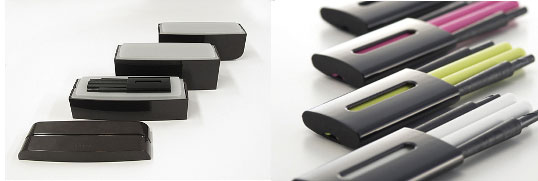
Ideal for people with slim bags or just design-lovers, the Ojue is minimalist functionalism par excellence. Inside the lunch box are three layers of containers that stack neatly one on top of the other, perfect for store your main course, side salad or desert. It also comes with matching chopsticks for the final cool Japan touch, storing neatly in a recess in the lunch boxes’ lid.

The Ojue Lunch Box features:
- Three stackable containers
- Upper: 140ml
- Middle: 300ml
- Lower: 300ml
- Colors: white, black, brown, pink and light green
- Size: 160x 160.5 × 55mm (6.29 x 6.31 x 2.16")
- Weight: 300g
- Materials: ABS resin (outer case), polypropylene (body), polyethylene (containers)
- Comes with matching chopsticks
- Instructions: Japanese onl



No comments:
Post a Comment